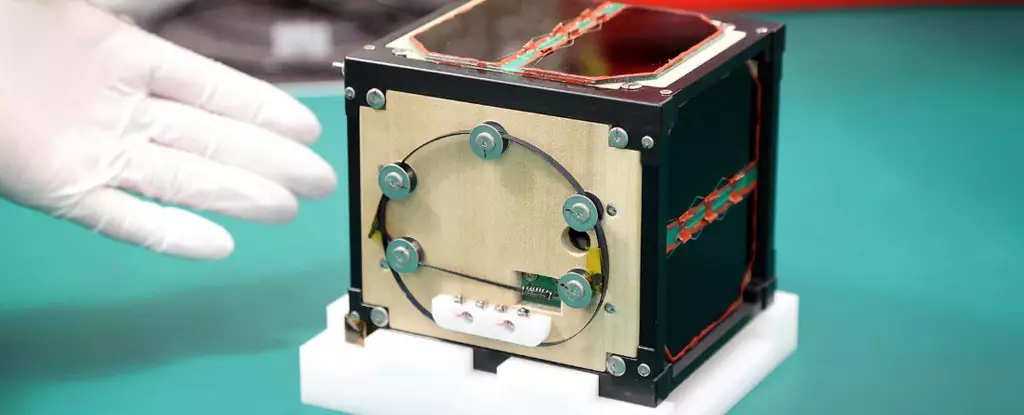In a groundbreaking achievement in the realm of space exploration, the world’s first wooden satellite has successfully launched into orbit aboard a SpaceX rocket. This pioneering endeavor, spearheaded by researchers at Kyoto University, marks a significant step towards the development of environmentally friendly space technology. The satellite, named LignoSat, is part of a resupply mission to the International Space Station (ISS) and serves as a trial for materials that may revolutionize the future of satellite design.
The core motivation behind the creation of LignoSat lies in its potential to mitigate the environmental impact associated with traditional metal satellites. As these satellites re-enter the Earth’s atmosphere, they often disintegrate, releasing metal particles that contribute to space debris. This debris poses a significant threat to both the environment and telecommunications networks, causing disruptions and posing hazards to operational satellites. The wooden construction of LignoSat is designed to burn up entirely upon re-entry, suggesting a promising alternative that may prevent the further accumulation of harmful particles in our atmosphere.
Measuring a mere 10 centimeters on each side, LignoSat is a compact and experimental satellite housed within a specially designed container prepared by the Japan Aerospace Exploration Agency (JAXA). The launch took place from NASA’s Kennedy Space Center in Florida, and according to Kyoto University’s Human Spaceology Center, the satellite “flew into space safely.” In an optimistic update post-launch, a representative from Sumitomo Forestry, LignoSat’s co-developer, confirmed that the satellite is expected to arrive at the ISS soon and will be deployed into its orbital mission approximately a month later.
The primary goal of LignoSat is to gather critical data on its performance in the harsh conditions of space. Researchers will monitor the satellite for signs of physical strain as it endures various environmental stresses, including extreme temperature fluctuations. This data will be invaluable for investigating whether non-metallic satellites can withstand the rigors of space travel and function effectively in orbit.
The implications of successful experiments with wooden satellites could extend far beyond LignoSat itself. Takao Doi, an astronaut and special professor at Kyoto University, has expressed optimistic views regarding the transformation of satellite construction, suggesting that non-metallic materials should become the norm in future satellite designs. As the world confronts escalating concerns about space debris and environmental sustainability, the exploration of innovative materials like wood could illuminate new pathways for the burgeoning field of space technology.
The launch of LignoSat embodies a blend of ecological mindfulness and technological advancement. As researchers embark on this pioneering journey, the outcome may not only redefine satellite construction but also align space exploration with essential environmental considerations. The future of satellites may indeed lie in their ability to adapt, evolve, and coexist with the Earth’s ecosystem, reflecting a profound shift in how we approach one of humanity’s most ambitious frontiers.


Leave a Reply